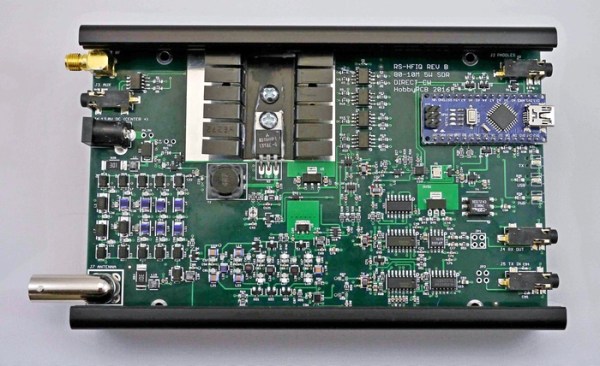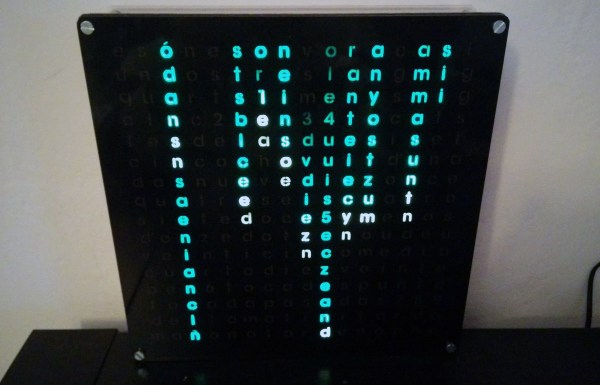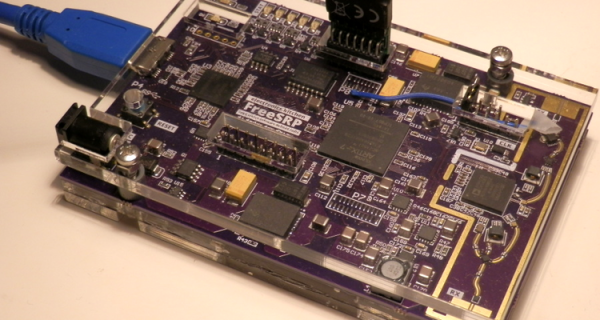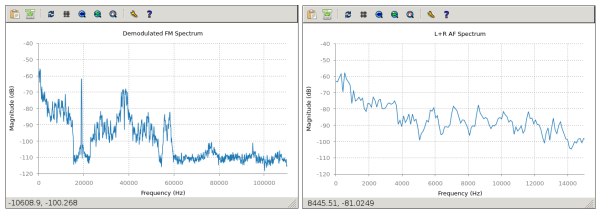Many stop lights at street intersections display a countdown of the remaining seconds before the light changes. If you’re like me, you count this time in your head and then check how in sync you are. But did you know that if the French had their way back in the 1890s when they tried to introduce decimal time, you’d be counting to a different beat? Did you know the Chinese have used decimal time for millennia? And did you know that you may have unknowingly used it already if you’ve programmed in Linux? Read on to see what decimal time is along with the answers to these questions.
Jumper Cables Block Trains
Standing Rock, North Dakota has been the site of a major protest this year against the Dakota Access Pipeline project. Protesters have sought to delay the pipeline’s progress by a wide variety of means, and both sides in the conflict have been accused of a variety of misdeeds.
An anonymous group supporting the protesters has released a video describing how they stop trains without the use of physical barricades. The video begins with police removing automobiles used to block the tracks and escorting trains through level crossings, showing how these traditional methods have been ineffective.
The video then goes on to outline what is described as a “sneaky” way of halting trains. Most railroads use what is known as a track circuit — a current run through the rails of the track detects when a train passes over it by the axles completing an electrical circuit between the two. By using a standard automotive jumper cable to connect the two rails together instead, the circuit is completed and falsely indicates to the railway signalling system that a train is present on the track in question. Due to the safety-critical nature of the railway, no trains can be run on the track until the short circuit is removed, else there is a great risk of collisions between trains on the network.
Intended as a practical guide, strategies to maximize disruption are outlined, such as hiding the cables under snow and painting them in black to evade detection as long as possible. Instructions on how to best make a solid connection to the rails are also shared.
It goes without saying that interfering with major infrastructure is risky, dangerous, and highly illegal. Protesters have already been arrested for physically blocking trains. Perpetrators of this method will surely be arrested if caught, and circumventing the technology could easily result in harsher charges associated with electronic security and safety systems. This is sabotage (deliberately obstructing) and undermines the validity of peaceful protest.
This shows how ingenuity is often spawned by turmoil and frustration. Reflect on human nature, and catch the video below the break.
Five-Watt SDR Transceiver For Hams
The availability of cheap SDR hardware created a flourishing ecosystem for SDR software, but a lot of the hardware driving the revolution was still “cheap”. In the last few years, we’ve seen quality gear replacing the TV dongles in many setups, and down-converters designed for them to allow them to work on the ham bands.
But something that’s purpose-built might be a better option if ham radio, particularly the shortwave portion thereof, is your goal. First off, you might want to transmit, which none of the TV dongles allow. Then, you might want a bit of power. Finally, if you’re serious about short-wave, you care more about the audio quality than you do immense bandwidth, so you’re going to want some good filters on the receiving end to help you pull the signal out of all the noise.
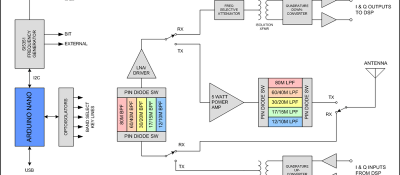 The RS-HFIQ 5 W SDR transceiver might be for you. It’s up on Kickstarter right now, and it’s worth looking at if you want a fully open source (schematics, firmware, and software) shortwave SDR rig. It’s also compatible with various open frontends.
The RS-HFIQ 5 W SDR transceiver might be for you. It’s up on Kickstarter right now, and it’s worth looking at if you want a fully open source (schematics, firmware, and software) shortwave SDR rig. It’s also compatible with various open frontends.
The single-board radio isn’t really a full SDR in our mind — it demodulates the radio signal and sends a 96 kHz IQ signal across to your computer’s soundcard where it gets sampled and fully decoded. The advantage of this is that purpose-built audio rate DACs have comparatively high resolution for the money, but the disadvantage is that you’re limited to 96 kHz of spectrum into the computer. That’s great for voice and code transmissions, but won’t cut it for high-bandwidth data or frequency hopping applications. But that’s a reasonable design tradeoff for a shortwave.
Still, an SDR like this is a far cry from how simple a shortwave radio can be. But if you’re looking to build up your own SDR-based shortwave setup, and you’d like to hack on the controls more than on the radio itself, this looks like a good start.
Realize The Truth… There Is No Word Clock
Do you always look at it encoded? – Well you have to. The image translators work for the construct program.
Word clocks are supposed to de-encode time into a more readable format. Luckily [Xose Pérez] managed to recover the encoded time signal of the simulation we are all living in with his word clock that displays time using a stylish Matrix code animation.
[Xose] already built his own versions of [Philippe Chrétien’s] Fibonacci Clock and [Jeremy Williams’s] Game Frame, and while doing so he designed a nice little PCB. It’s powered by an ATmega328p, features an RTC with backup battery, an SD-card socket, and it’s ready to drive a bunch of WS2812Bs aka NeoPixels. Since he still had a few spare copies of his design in stock, his new word clock is also driven by this board.
Continue reading “Realize The Truth… There Is No Word Clock”
Amazing SDR Built By 16 Year Old
[Lukas] started his epic SDR-from-scratch build when he was 16. Projects like this aren’t completed overnight. (He’s now 18. We’re impressed.)
The project itself is a Software-Defined Radio built on top of the 12-bit Analog Devices AD9364 transceiver IC. A big fat FPGA takes the data and runs it off to a USB 3.0 interface, which is necessary for the amount of data this thing will be producing — he’s got it receiving 56 MHz of bandwidth. In short, this is an SDR peripheral that’s in the big leagues.
After two years of work and (only!) three revision, [Lukas] got the thing working. Read his writeup for the blow-by-blow account. In the end, a 6-layer board was necessary for the routing to get the full speed out of the clocking, and he discovered the reason that you use exactly the specified bias resistors — the expensive ADC chip gets very hot. But he didn’t give up, and in the end he pulled off a project of immense complexity. In his own words:
I have discovered that taking on large projects, even when not knowing how to tackle problems that might arise, is a very effective way of learning for me. It’s just important to be persistent, as I’ve seen that almost any problem can be solved on your own — which is incredibly rewarding — even if you get stuck and seem to not make progress for a while.
[Lukas] is now working on the software. He’s already got a hacked osmocom driver working, so it plays nice with GNURadio.
Of course, there are tons of ways to get into SDR without building your own from scratch, but we applaud [Lukas] for going the hard way. If you’re tempted to follow in his footsteps, have a look at [Michael Ossmann]’s great talk on making the RF design process as tractable as possible.
LuaRadio Brings More Options To SDR
GNURadio is the swiss-army-knife of software-defined radio suites: it does everything and anything. It has a great GUI overlayer that makes creating radio flows fairly simple. There are only two areas where we could quibble with the whole system — it’s a gigantic suite of software, and it’s a lot harder to code up in Python than it is to use the GUI.
[Vanya Sergeev] started up his LuaRadio project to deal with these shortcomings. If you’re looking for the full-GUI experience, you’re barking up the wrong tree here. LuaRadio is aimed at keeping things easy to code and keeping the codebase small and tidy.
That doesn’t mean that it departs entirely from GNURadio’s very successful flow-graph programming paradigm, however, and if you’re comfortable with the procedure of hooking up a signal source to a filter block to an output, you’ll be doing fine here as well. Check out the obligatory FM radio demo — the “hello world” of SDR — and you’ll see how it works: instantiate the various blocks in code, and then issue “connect” commands to link them together.
LuaRadio’s main selling points are its size and the ease of programming it by hand. It’s got great documentation to boot. It’s written as a library that’s embeddable in your C code, so that you can write standalone programs that make use of its functionality.
LuaRadio is a new project and it doesn’t have a GUI either. It may not be the ideal introduction to SDR if you’re afraid of typing. (If you are new to SDR, start here.) But if you want to code up your SDR by coding, or run your radio on smaller devices, it’s probably worth a look. It’s at v0.1.1, so we’re looking forward to hearing more from LuaRadio in the future. Any of you out there use it? We’d love to hear in the comments.
SDRAM Logic Analyzer Uses An AVR And A Dirty Trick
We often see “logic analyzer” projects which are little more than microcontrollers reading data as fast as they can, sending it to a PC, and then plotting the results. Depending on how fast the microcontroller is, these projects range from adequate to not very useful.
At first glance, [esot.eric’s] logic analyzer project has an AVR in it, so it ought to be on the low end of the scale. Then you look at the specs: 32 channels at 30 megasamples per second. How does that work with an AVR in it?
The answer lies in the selection of components. The analyzer uses a 128MB SDRAM DIMM (like an older PC might use for main memory). That makes sense; the Arduino can’t store much data internally. However, it isn’t the storage capacity that makes this choice critical. It seems [esot.eric] has a way to make the RAM “free run”.
The idea is to use the Arduino (or other host microcontroller) to set up the memory. Some of the memory’s output bits feedback to the address and data lines. Then the microcontroller steps aside and the SDRAM clocks samples into its memory by itself at the prevailing clock rate for the memory.
Continue reading “SDRAM Logic Analyzer Uses An AVR And A Dirty Trick”



